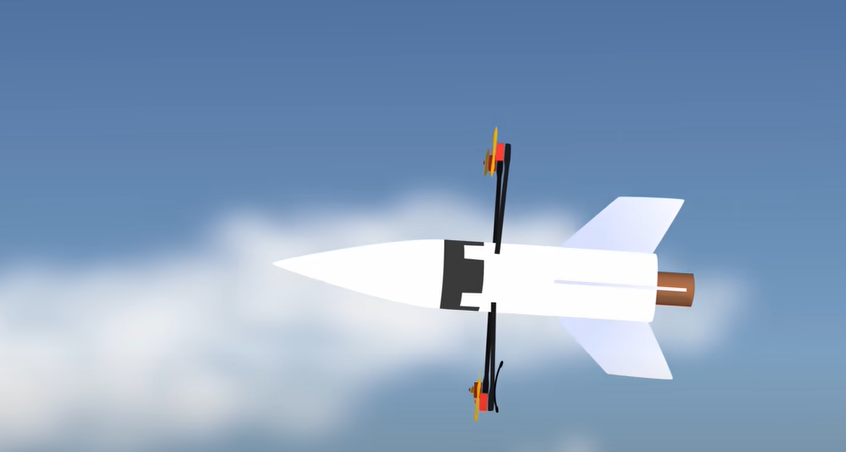Drone with Rocket Engine for Speed Boost

Overview
This innovative concept involves a drone equipped with a rocket engine for enhanced speed and efficiency. The drone takes off like a regular drone, using its rotors for lift and stability, but once it reaches a certain altitude or speed, the rocket engine is activated to provide a powerful speed boost. This hybrid propulsion system combines the advantages of drones and rockets, providing versatility for a wide range of applications.
Concept Design
-
Drone Takeoff
- Initially, the drone relies on its standard rotors to lift off from the ground.
- The rotors provide vertical lift and stabilization, allowing the drone to hover and ascend.
- The onboard sensors manage the stability and control of the drone during takeoff, ensuring a smooth transition.
-
Rocket Engine Engagement
- After reaching a predefined altitude or speed, the rocket engine kicks in.
- The rocket engine provides a sudden burst of thrust, allowing the drone to quickly accelerate in horizontal direction.
- The rocket’s propulsion system takes over the majority of the thrust, leaving the drone’s rotors to maintain stability and control.
-
Hybrid Propulsion Control
- A control system continuously monitors the speed and altitude of the drone, activating and deactivating the rocket engine as needed.
- The system ensures that the transition between drone and rocket propulsion is seamless, maintaining stability and safety at all times.
Use Cases
1. Search and Rescue Operations
- Scenario: A drone is deployed to reach a disaster site in a difficult-to-reach location (such as mountains or collapsed buildings). The drone takes off and navigates to the area with its rotors. Once it needs to speed up to cover a large area quickly, the rocket engine engages.
- Benefit: The hybrid system allows for both stable low-speed flight (using drone rotors) and high-speed travel (with rocket propulsion) to quickly reach the affected area.
2. Military Surveillance
- Scenario: In military operations, surveillance drones need to stay low to the ground during reconnaissance to avoid detection but need to travel long distances quickly.
- Benefit: The drone’s ability to switch to rocket propulsion allows it to cover vast areas quickly when required without compromising on stealth when needed.
3. Scientific Research and Data Collection
- Scenario: A drone is used in scientific exploration in remote areas such as the Arctic or deep forests. Once it has gathered initial data from a localized area, it needs to quickly reach other locations to gather more data points.
- Benefit: This system can significantly reduce travel time between areas while maintaining the flexibility to hover and perform close-up research.
4. Emergency Medical Deliveries
- Scenario: In emergency situations, the drone can deliver medical supplies or first-aid kits to remote or hard-to-reach locations. The rocket propulsion system allows it to quickly traverse large distances once the supplies are on board.
- Benefit: Speeding up the delivery process can save lives by ensuring the medical supplies reach their destination faster.
5. Commercial Cargo Transportation
- Scenario: For industries like logistics, this hybrid drone system can be used to transport goods quickly over long distances. Initially, the drone could hover to pick up and deliver packages in urban environments, then switch to rocket propulsion to cover large distances between cities.
- Benefit: Faster deliveries with the versatility to operate in different environments.
6. Entertainment and Filmmaking
- Scenario: In film production, drones are often used to capture aerial shots. For specific shots requiring a sudden burst of speed or higher altitude, the rocket engine kicks in.
- Benefit: The ability to quickly accelerate during filming allows for dynamic and cinematic shots, enhancing the production value of the scene.
7. Space Exploration or High-Altitude Drones
- Scenario: This system could be adapted for high-altitude or space exploration drones. The rocket engine can help the drone reach near-space altitudes, where conventional drones can’t operate due to the thin atmosphere.
- Benefit: A hybrid propulsion system offers the versatility needed to operate in extreme conditions.
This hybrid system is versatile and can be adapted for a wide range of industries, offering the best of both drone and rocket technologies for speed, stability, and efficiency.
